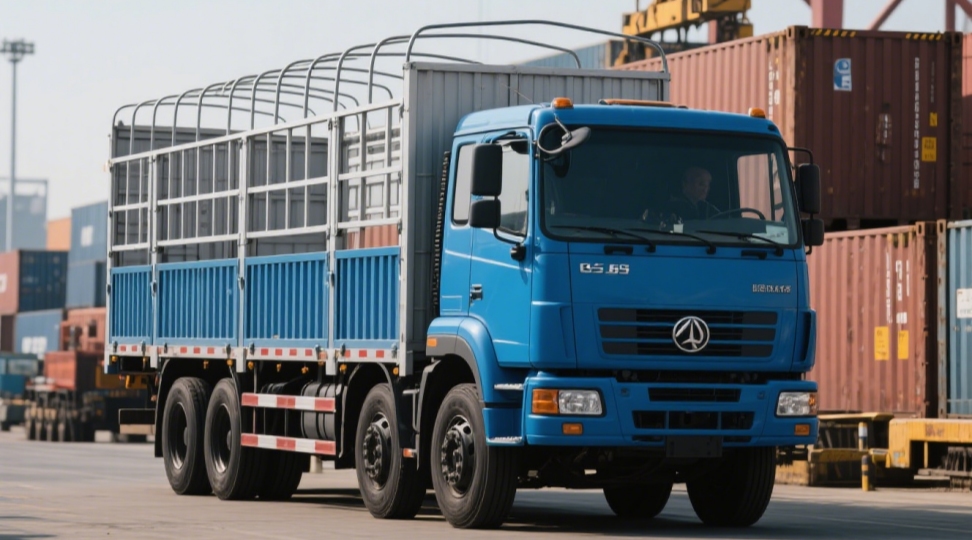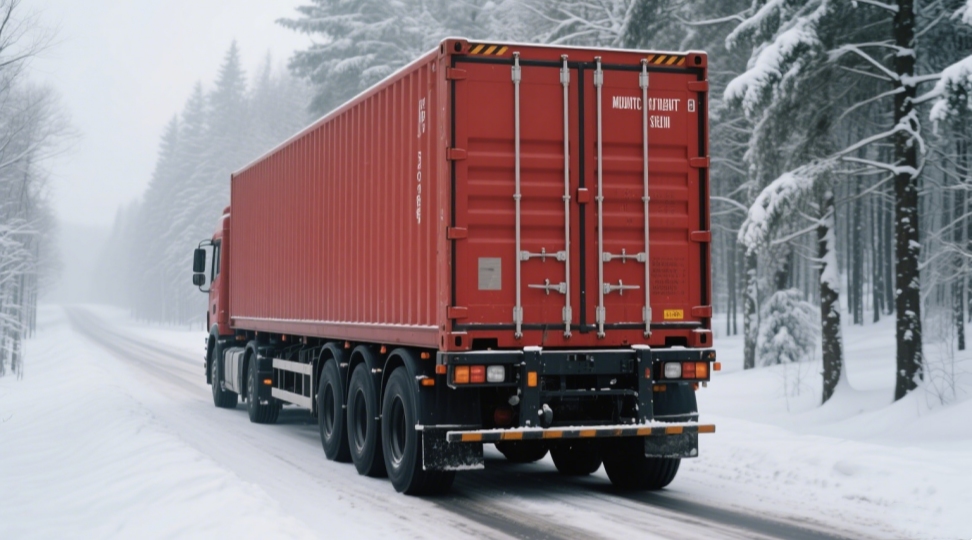Какой вес груза разрешен грузоотправителям?oad?

Каждый раз, когда перегруженный грузовик выезжает на государственную трассу, он становится источником опасности. Перегруженные грузы нагружают инфраструктуру, увеличивают риск несчастных случаев и приводят к серьезным нормативным штрафам. Для грузоотправителей понимание точных весовых ограничений — это не просто вопрос соответствия — это важнейшая обязанность по обеспечению общественной безопасности и эффективности цепочки поставок. Федеральные и государственные правила устанавливают четкие границы для mмаксимальный вес груза, с серьезными последствиями за нарушения, выходящими далеко за рамки штрафов DOT.
Основные допустимые пределы веса при международных автомобильных перевозках (фокус: Европа, Евразия, основные торговые пути)
В отличие от единого федерального стандарта, как в США, международные ограничения веса груза значительно различаются в зависимости от страны и региона. Основные регулирующие рамки включают Директивы Европейского Союза и Конвенцию МДП, но национальные законы всегда имеют приоритет. Вот разбивка общих стандартов, с которыми сталкиваются грузоотправители, использующие международные автомобильные грузоперевозки:
Полная масса транспортного средства (GVW): Это общая допустимая масса загруженного транспортного средства (грузовика, прицепа, груза, топлива, водителя и т. д.).
Предельные нагрузки на ось: Важно отметить, что GVW — не единственное ограничение. Распределение веса по осям строго регламентировано, чтобы предотвратить чрезмерный износ дороги и повреждение мостов.
Ведущий мост (одинарный): Обычно ограничено 11,5 тоннами (приблизительно 25 350 фунтов).
Тандемные оси (группа из 2 сближенных осей): Обычно ограничен 19-20 тоннами (приблизительно 41 890 - 44 090 фунтов). Ограничения уменьшаются при уменьшении расстояния между осями.
Тридемные оси (группа из 3-х сближенных осей): Часто ограничивается 24 тоннами (приблизительно 52 910 фунтов) или менее.
Рулевая ось: Критически важен для управления транспортным средством, обычно ограничен 7,5–8,5 тоннами (приблизительно 16 535–18 740 фунтов), иногда ниже.
Таблица: Типичные международные ограничения веса грузовиков (фокус Европа/Евразия)
| Тип веса | Общий стандарт | Ключевые вариации | Основная причина принудительного исполнения |
|---|
| Полная масса транспортного средства (GVW) | 40 тонн (88 000 фунтов) | 44 т (ЕС интермодальные/эко), 60-76 т (скандинавские) | Защита инфраструктуры |
| Рулевая ось | 7,5–8,5 тонн (16 500–18 700 фунтов) | Обычные более низкие пределы (например, 7,1 т в Великобритании) | Управление транспортным средством и безопасность |
| Ведущий мост (одинарный) | 11,5 тонн (25 350 фунтов) | Часто ниже на дорогах, не являющихся автомагистралями | Износ дорожного покрытия |
| Группа тандемных осей | 19–20 тонн (41 900–44 100 фунтов) | Уменьшается при уменьшении расстояния между осями | Профилактика стресса на мосту |
| Группа осей Tridem | 21–24 тонны (46 300–52 900 фунтов) | Сильно различается по странам/регионам | Профилактика стресса на мосту |
| Нагрузка на колесо | ≤ 10 кг/мм ширины шины | Строго соблюдается на границах | Предотвращение выхода из строя шин |
Критические переменные, влияющие на вашу юридическую нагрузку

Просто знать ограничение GVW заголовка недостаточно. Грузоотправители должны тщательно учитывать эти факторы, чтобы обеспечить соответствующую загрузку груза и избежать штрафов за перевес:
Собственный вес транспортного средства и прицепа: Пустой вес конкретной комбинации грузовика и прицепа, которую вы используете, напрямую снижает вашу доступную грузоподъемность. Стандартный прицеп с боковыми шторами может весить 7 тонн, оставляя только 33 тонны для груза при пределе GVW 40 тонн.
Конфигурация и расстояние между осями: Количество осей и расстояние между ними существенно влияют на легальное распределение веса. Большее количество осей или более широкое расстояние обычно позволяют увеличить групповой вес, но увеличивают вес тары. Точное планирование нагрузки имеет важное значение.
Плотность и распределение груза: Тяжелые, плотные предметы, упакованные в один конец, могут легко перегрузить определенные оси (например, ведущие оси или тандемы прицепа), даже если общий GVW является допустимым. Методы крепления груза (например, ремни, грузовые дуги, подкладки) также добавляют вес.
Ограничения по конкретному маршруту: Ограничения по весу могут быть ниже на определенных дорогах, мостах или в определенные сезоны (например, ограничения из-за весенней распутицы). Планирование международных маршрутов должно учитывать правила всех транзитных стран и ограничения инфраструктуры.
Топливо, экипаж и оборудование: Вес водителя, сменного водителя, полных топливных баков и любого необходимого бортового оборудования (подъемные борта, тележки для поддонов, дополнительное крепежное оборудование) учитываются в GVW и весе осей. Никогда не упускайте из виду эти «негрузовые» веса.
Характеристики шин: Максимальная нагрузка на шину и ось определяется индексом нагрузки производителя шин и установленными законом ограничениями нагрузки на колесо (например, не более 10 кг на мм ширины шины).
Серьёзные последствия перевеса грузов при международных перевозках
Риски превышения лимита веса груза выходят далеко за рамки простых штрафов:
Крупные штрафы и санкции: Штрафы сильно различаются в зависимости от страны, но они неизменно суровы. Они могут взиматься за перегрузку оси, за перегрузку тонны и за пересечение юрисдикции. Ожидайте штрафы в размере от сотен до десятков тысяч евро/долларов. Повторные нарушители сталкиваются с более высокими штрафами и возможным приостановлением действия водительских прав.
Операционные кошмары и расходы:
Принудительная разгрузка: Груз необходимо вывезти на обочину дороги или на склад, чтобы соблюсти ограничения по весу.
Перевалка: Поиск другого транспортного средства(й) для перевозки лишнего груза.
Плата за хранение: Расходы, возникающие при хранении груза во время доработки.
Значительные задержки: Гарантированное нарушение сроков поставки и графиков.
Изъятие транспортного средства: Власти многих стран имеют право конфисковать перегруженное транспортное средство до тех пор, пока штрафы не будут выплачены, а груз не станет законным.
Репутационный ущерб: Постоянные нарушения портят отношения с перевозчиками, клиентами и органами власти.
Катастрофическая ответственность: Если перегруженный грузовик становится причиной аварии, особенно фатальной, грузоотправители, одобрившие груз, несут огромную ответственность. Суды обычно признают грузоотправителей грубо небрежными, что приводит к многомиллионным судебным решениям в евро/долларах. Страхование ответственности за груз может быть аннулировано для нелегальных грузов.
Как DR Trans обеспечивает гарантированное соответствие веса для ваших международных поставок
Для того чтобы разобраться в сложной мозаике международных правил грузоперевозок, требуются специальные знания. DR Trans предлагает комплексные решения для устранения рисков, связанных с перевесом груза, и оптимизации вашей допустимой грузоподъемности:
Экспертная предрейсовая сертификация веса и документация:
Сертифицированное взвешивание на месте: Мы используем калиброванные, сертифицированные весы для обеспечения точных измерений по осям и общего веса автомобиля перед выездом с вашего объекта. Это создает юридически обоснованные цифровые сертификаты веса.
Экспертиза книжек МДП: Как владельцы сертификата TIR, мы профессионально управляем процессом TIR Carnet. Это включает в себя обеспечение соответствия веса документально для бесперебойного пересечения границ в более чем 77 странах, минимизацию задержек и проверок. TIR предлагает значительные преимущества для трансграничных автомобильных грузоперевозок.
Мультимодальная оптимизация для сложных грузов:
Преимущество железнодорожных грузоперевозок: Для исключительно тяжелых или плотных грузов, приближающихся к пределам веса для автомобильных перевозок, переход на железнодорожный транспорт часто является идеальным решением. Железнодорожный транспорт имеет значительно более высокие допуски веса на контейнер и полностью обходит ограничения по осям для автомобильных перевозок. DR Trans специализируется на эффективных решениях по железнодорожным грузоперевозкам, интегрированных с отправкой отправлений.
Авиаперевозки для срочных грузов и грузов небольшого веса: Для высокоценных, срочных или менее 5-тонных грузов авиаперевозки обеспечивают скорость и позволяют избежать проблем с весом на дороге. Мы занимаемся бесперебойной авиалогистикой.
Гибкость морских перевозок: Для несрочных тяжелых или громоздких грузов морские перевозки предлагают экономически эффективный транспорт с высокими ограничениями по весу контейнера (хотя ограничения по порту и внутреннему транспорту все еще действуют). Мы управляем всей цепочкой морской логистики.
Расширенное планирование нагрузки и консультации:
Наши специалисты по логистике используют современные инструменты и глубокие знания мировых правил взвешивания грузов, чтобы дать рекомендации по оптимальному паллетированию, контейнеризации и выбору транспортного средства перед началом погрузки.
Мы обеспечиваем распределение груза таким образом, чтобы максимально увеличить полезную нагрузку, строго соблюдая ограничения по рулевой оси, ведущей оси, тандему/тридему и общей массе автомобиля во всех странах транзита.
Важный вывод для международных грузоотправителей
Понимание и соблюдение установленных законом ограничений по нагрузке не подлежит обсуждению для безопасной, эффективной и юридически соответствующей международной перевозки грузов. Последствия нарушений, связанных с превышением веса, — от устрашающих штрафов и задержек до разрушительной ответственности — просто слишком суровы. Правила значительно различаются в зависимости от страны и маршрута, требуя специальных знаний.
Партнерство с сертифицированным международным поставщиком логистических услуг, таким как DR Trans, имеющим сертификацию TIR и опыт в железнодорожных перевозках, авиаперевозках, морских перевозках и отправке грузов, дает вам необходимую гарантию. Мы занимаемся сложными вопросами соответствия веса груза, распределения нагрузки на ось, ограничениями по маршруту и бесперебойными мультимодальными перевозками, гарантируя, что ваши товары будут перемещаться законно, безопасно и эффективно через границы и континенты.
Убедитесь, что ваши глобальные поставки всегда находятся в пределах допустимого веса. Свяжитесь с DR Trans для получения экспертного взвешивания, решений TIR и соответствия требованиям мультимодальных перевозок: Получите консультацию по вопросам соответствия
















 IPv6 ПОДДЕРЖИВАЕТСЯ СЕТЬЮ
IPv6 ПОДДЕРЖИВАЕТСЯ СЕТЬЮ
